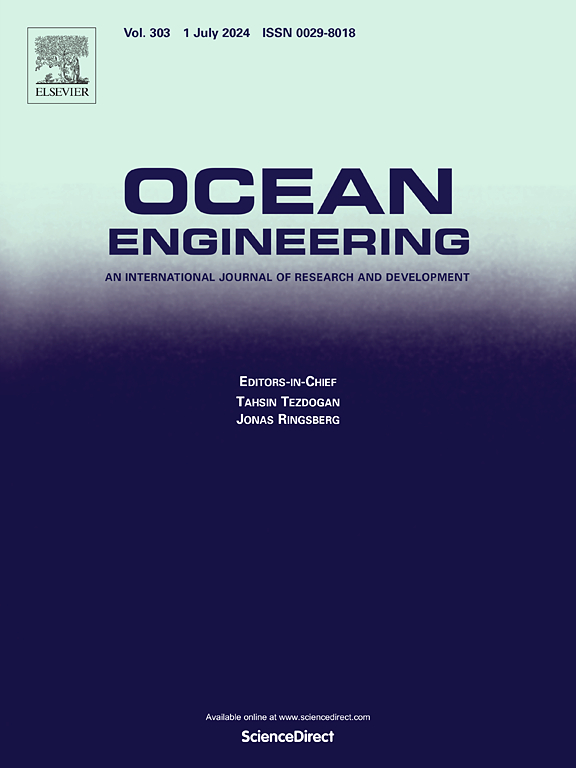Numerical investigation on the suction caisson response considering seabed trenches and cyclic loading
IF 5.5
2区 工程技术
Q1 ENGINEERING, CIVIL
引用次数: 0
Abstract
As anchors of floating offshore structures, suction caissons endure cyclic loads transmitted by mooring chains. The moving chains repeatedly cut into the seabed, triggering the formation of trench, which further reduces the stability of suction caisson. However, the coupling effects of cyclic loading and trenches on the movement of suction caisson remain unexplored. To address this issue, finite element analyses were conducted to investigate the coupling effect of cyclic loading and trench on the movement of rigid suction in clay, employing a bounding surface constitutive model. The influences of cyclic amplitude, mean load, trench depth and width on the anchor behaviour are analysed. The results show that movement at the fixed loading point on the rigid caisson nonlinearly increases with the amplitude (qam) and mean (qme) of cyclic loading on a trenched seabed. This increase becomes pronounced when qam exceeds 0.15, and qme surpasses 0.35 the caisson's bearing capacity (qref). Additionally, trench dimensions significantly influence the caisson's movement. Specifically, trench depth has complex influence on the caisson's movement pattern, and increasing trench width results in larger movement, especially beyond a certain width. Considering the seabed trenches and cyclic loading, these findings offer valuable insight into the suction caisson movement.
考虑海床沟槽和循环荷载的吸力沉箱响应数值研究
作为海上浮动结构的锚,吸力沉箱承受着系泊链传递的周期性载荷。移动的链条反复切割海床,导致海沟的形成,从而进一步降低了吸力沉箱的稳定性。然而,循环载荷和沟槽对吸水沉箱运动的耦合效应仍未得到研究。针对这一问题,我们采用约束面构成模型进行了有限元分析,以研究循环荷载和沟槽对粘土中刚性吸力运动的耦合效应。分析了循环振幅、平均荷载、沟槽深度和宽度对锚固行为的影响。结果表明,刚性沉箱上固定加载点的移动随海沟海床循环加载的振幅(qam)和平均值(qme)的增加而非线性增加。当 qam 超过 0.15,qme 超过沉箱承载能力(qref)的 0.35 时,这种增加就会变得很明显。此外,海沟尺寸对沉箱的移动也有很大影响。具体来说,沟槽深度对沉箱的移动模式有复杂的影响,沟槽宽度的增加会导致更大的移动,尤其是超过一定宽度时。考虑到海底沟槽和循环荷载,这些发现为吸水沉箱的移动提供了宝贵的见解。
本文章由计算机程序翻译,如有差异,请以英文原文为准。
求助全文
约1分钟内获得全文
求助全文
来源期刊

Ocean Engineering
工程技术-工程:大洋
CiteScore
7.30
自引率
34.00%
发文量
2379
审稿时长
8.1 months
期刊介绍:
Ocean Engineering provides a medium for the publication of original research and development work in the field of ocean engineering. Ocean Engineering seeks papers in the following topics.
 求助内容:
求助内容: 应助结果提醒方式:
应助结果提醒方式:


